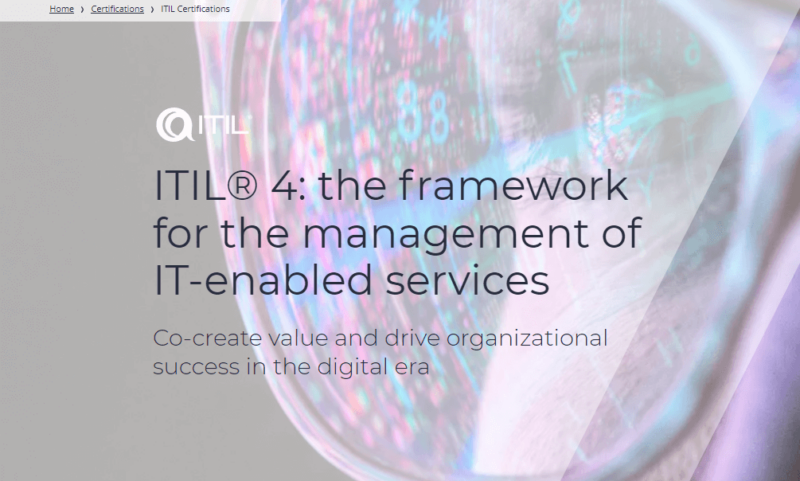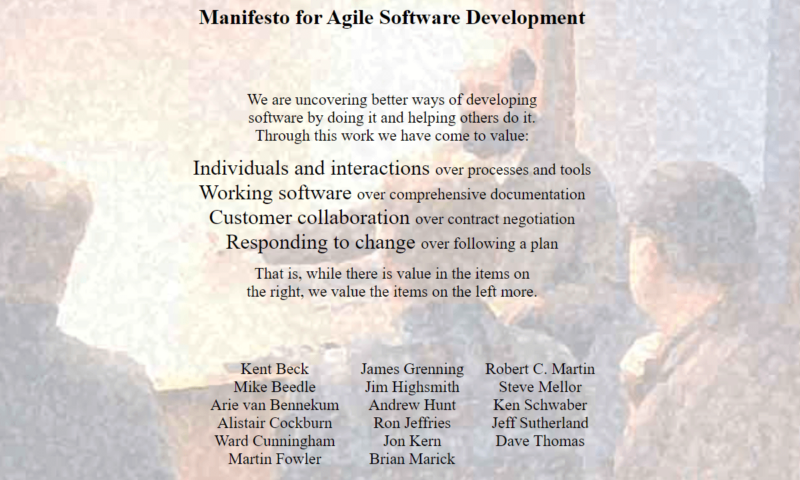In IT, Agile and ITIL frameworks — along with the best project management software — can help manage infrastructure, handle designs, implement IT systems and foster a culture of continual improvement. However, the two work approaches couldn’t be more different. In this ITIL vs Agile guide, we’ll explore both frameworks and help you decide which approach is right for your team.
Below, we’ll explain the differences between ITIL and Agile, discuss both frameworks’ key principles and cover the benefits of each. By the end of this guide, you’ll have a better understanding of both approaches, and you’ll be able to make an informed decision before picking one over the other.
ITIL vs Agile Frameworks
There are many differences between ITIL and Agile that you need to know. ITIL, or Information Technology Infrastructure Library, is a set of guidelines used to manage IT services and design, and implement IT best practices. Agile is a set of values and principles for project management that champions flexibility, collaboration and transparent communication.
What Is ITIL?
ITIL is a systematic framework that was made to create practices for the emerging world of IT. It was designed by the U.K.’s Central Computer and Telecommunications Agency (CCTA) in the 1980s and is broken down into five stages: service strategy, service design, service transition, service operation and continual service improvement.

ITIL focuses on the use of documentation and predictable processes to ensure high customer satisfaction, successful risk management and resource optimization, and uncompromised IT service delivery. Those holding ITIL certifications can help make sure that IT environments are secure, stable and primed for growth.
What Is Agile?
Agile is a set of values and principles; it is an iterative approach to work. You’ll find these principles and guidelines used in many Agile frameworks, two of which you can read about in our “What is Scrum?” and “What is a kanban board?” articles.
Agile became popular in 2001 after a group of developers rebelled against structured project management approaches like Waterfall, which made it difficult to revisit portions of development until the project’s end.

project management methodologies like Waterfall.
Agile frameworks are typically used by software development teams but have been modified for marketing, HR, healthcare and other industries. If you require HIPAA-compliant software to implement Agile methodologies on healthcare projects, see our roundup of the best healthcare project management software.
Per the Agile Manifesto, Agile champions individuals and interactions over processes and tools, working software over comprehensive documentation, customer collaboration over contract negotiation and responding to change over following a plan. If Agile project management interests you, look into these Agile certifications.
ITIL vs Agile: Comparison at a Glance
To get a better understanding of how ITIL and Agile differ, we have created a table that highlights the key differences between the two approaches to work.
| Criteria: | ITIL | Agile |
|---|---|---|
| Focus | IT service management | Project management |
| Approach | Highly structured work environments to ensure uninterrupted service | Very adaptive and flexible to meet changing customer demands & market changes |
| Stakeholder & Customer Involvement | Minimal involvement in processes once a project starts | High participation; stakeholders & clients provide frequent feedback |
| Documentation | Uses extensive documentation for plans & communication | Favors face-to-face interactions for gathering feedback & discussing project changes |
| Planning | Mimics traditional project management methodologies like Waterfall, which favors predictive steps | Focuses on short-term plans (sprints) that are used to create working product iterations frequently |
| Risk & Incident Management | Attempts to plan for risks & incidents during a project’s planning stage | Risks are planned for during initial planning & monitored during sprint reviews |
| Flexibility | Limited flexibility due to a highly structured approach to IT management | Highly flexible; an Agile project’s scope can quickly be changed to meet customer demands & market changes |
| Suitability | Ideal for IT projects in stable environments | Ideal for software development projects (and more) in dynamic, unpredictable environments |
| Team Structure | Defined roles where everyone knows what all other members are working on | Cross-functional teams that can easily change gears to help other departments |
| Scalability | Ideal for large organizations & teams working in predictable environments | Suitable for small teams of 10 or less working in dynamic environments |
Key Principles of ITIL
ITIL focuses on a lifecycle called the service lifecycle. This lifecycle has five stages, each crucial to ensuring the efficient delivery and management of IT services to clients. Below, we’ll examine each of the key principles.
Benefits of ITIL
Now that we have examined ITIL, it’s time to discuss its benefits and how it can help ensure the efficient management and delivery of IT services.
- Increased efficiency: The ITIL framework promotes detailed plans that can help reduce waste and optimize resources. A planned approach can also help automate tasks, which can increase efficiency, lower costs and eliminate redundancy throughout the service lifecycle.
- Enhanced risk management: ITIL’s approach to risk management involves brainstorming all potential risks before a project starts. This allows leaders to implement plans and proactive measures to deal with risks no matter when they occur during the service lifecycle.
- Better communication: As all team roles are clearly defined, organizations that utilize the ITIL approach will find that communication improves. Every team member knows who to contact when issues occur and who the key stakeholders are.
- Continuous improvement: ITIL’s insistence on aligning business needs with emerging technology across an entire organization ensures that companies stay ahead of the curve regarding technological changes and technology optimization.
- Data-driven management: ITIL relies on data and metrics (key performance indicators) to help managers gain organizational insights into deployed devices and IT services. Being informed allows organizations to realize continual improvement, as they can determine which areas are performing and which ones need attention.
- Increased customer service: ITIL’s rigid approach to processes, service delivery, downtime minimization and efficiency helps organizations meet customer expectations and increase customer satisfaction.
Key Principles of Agile
Agile project management champions flexibility, transparent communication, customer and stakeholder involvement, and short, iterative development cycles. This process is the complete opposite of traditional project management methodologies like Waterfall and the Critical Path Method, which involve very rigid schedules, numerous documents and little client interaction.

The Agile Manifesto — a document produced by the Agile Alliance in 2001 — outlines Agile and how Agile teams should act during projects. Many Agile frameworks, including Scrum, XP, DSDM and Kanban, follow Agile values and principles. The Agile methodology comprises 12 principles; we’ll cover the most important ones below.
Benefits of Agile
Thanks to its adaptable approach to work, Agile project management is favored in many industries. While it’s mainly used by software developers, Agile methods can also be used by creative teams, marketers, healthcare professionals, human resources teams and manufacturers. Below, we’ll take a quick look at the benefits of Agile project management.
- Improved collaboration: Open communication and collaboration within teams, and with clients and stakeholders, results in products that meet the needs of end users.
- Employee empowerment: Cross-functional teams can make timely decisions and self-organize, leading to increased project buy-in and higher morale.
- Increased product quality: Agile’s insistence on frequent software and product testing ensures that deliverables meet the client’s needs and function as intended.
- Enhanced flexibility: Agile frameworks let teams pivot to meet new client demands, changing markets and new business strategies.
- Reduced risks: Unlike traditional project management methodologies, where testing only occurs at the end of the project, Agile’s focus on frequent testing allows developers to find bugs and issues quickly, which can help minimize risks.
Agile vs ITIL: Which One Should You Choose?
Choose Agile for small cross-functional teams and decentralized projects that change rapidly. On the other hand, ITIL is better for rigid project structures and teams focusing on IT service management. Choosing between Agile and ITIL will depend on your company’s projects, service goals and business objectives. While it is possible to combine ITIL and Agile methods to create Agile service management, it’s still generally better to pick one or the other.
Before deciding between Agile and ITIL, consider the following:
- Organizational structures and cultures: The framework you use is often dictated by team size and company culture. Agile is for you if you have a small team and prefer decentralized organizational structures where everyone can make decisions. ITIL will be better if you prefer rigid structures and guidance that flows from the top down.
- Available resources: For Agile to succeed, teams need to be cross-functional and knowledgeable about project management frameworks and software development. ITIL teams must be familiar with IT service management and best practices.
- Business goals and objectives: Agile is better suited for teams that produce software and focus on improving customer relations. The ITIL framework is better for teams that want to improve and standardize IT services.
- Project types: Agile is the better framework for your team if you work on projects that change rapidly, and are complex and uncertain in nature. ITIL will be the better option if you work on projects requiring stable work environments and structure.
Despite their differences, Agile and ITIL can be used together successfully. IT service providers can use Agile principles to help them design IT frameworks. They can then switch over to ITIL when implementing the requested technology and services. Using both methods gives users flexibility during the design stage and stability during deployment and maintenance.
Final Thoughts
While Agile and ITIL frameworks can coexist to form an Agile approach to IT services management, each framework has pros and cons that allow it to flourish in scenarios where the other isn’t well suited.
Agile frameworks are ideal for teams that need flexibility, enhanced communication and collaboration during product development cycles. ITIL is better suited for stable IT environments where the implementation and standardization of IT services take center stage.
Which approach to work do you use in your workplace? Have you successfully mixed Agile and ITIL to create hybrid IT service management processes? Which Agile framework do you use to help drive your software development team to success? Let us know in the comments. Thanks for reading.
FAQ: Agile vs ITIL
-
ITIL and Agile can coexist. ITIL can be used to manage IT frameworks once they are up and running, while Agile can be used during the development efforts of new IT frameworks.
-
While very structured compared to Agile, ITIL is not outdated as its framework is constantly being updated.
-
The difference between ITIL and Scrum is that ITIL is used to standardize and enhance the efficiency of IT services, whereas Scrum is a project management framework that focuses on delivering frequent iterations of working software.
-
The five stages of ITIL are service strategy, service design, service transition, service operation and continual service improvement.
{“@context”:”https:\/\/schema.org”,”@type”:”FAQPage”,”mainEntity”:[{“@type”:”Question”,”name”:”Can ITIL and Agile Coexist?”,”acceptedAnswer”:{“@type”:”Answer”,”text”:”
ITIL and Agile can coexist. ITIL can be used to manage IT frameworks once they are up and running, while Agile can be used during the development efforts of new IT frameworks.\n”}},{“@type”:”Question”,”name”:”Is ITIL Outdated?”,”acceptedAnswer”:{“@type”:”Answer”,”text”:”
While very structured compared to Agile, ITIL is not outdated as its framework is constantly being updated.\n”}},{“@type”:”Question”,”name”:”What Is the Difference Between ITIL and Scrum?”,”acceptedAnswer”:{“@type”:”Answer”,”text”:”
The difference between ITIL and Scrum is that ITIL is used to standardize and enhance the efficiency of IT services, whereas Scrum is a project management framework that focuses on delivering frequent iterations of working software.\n”}},{“@type”:”Question”,”name”:”What Are the 5 Stages of ITIL?”,”acceptedAnswer”:{“@type”:”Answer”,”text”:”
The five stages of ITIL are service strategy, service design, service transition, service operation and continual service improvement.\n”}}]}
Sources:
The post ITIL vs Agile: Comparing Project Management Approaches in 2024 appeared first on Cloudwards.

